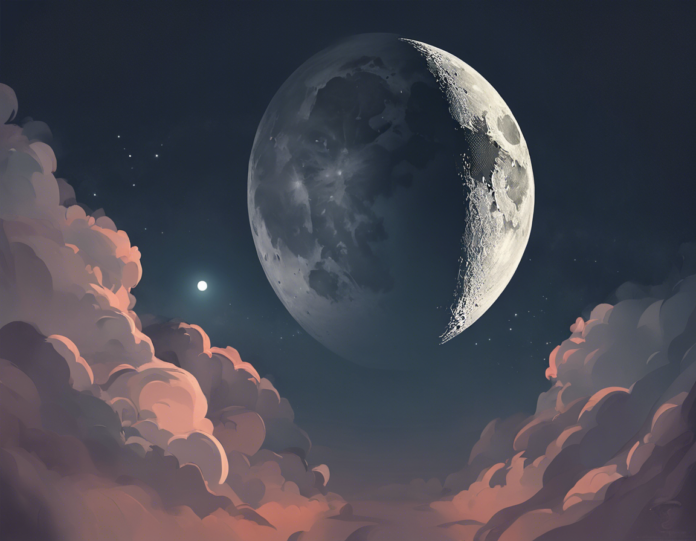The moon has been a source of wonder and admiration for humans since the beginning of time. Its mystical allure and mesmerizing presence have inspired countless myths, legends, and works of art. In this blog post, we will delve into the various aspects of appreciating the beauty of the moon, from its scientific significance to its cultural symbolism.
The Science of the Moon
The moon, Earth’s only natural satellite, plays a crucial role in maintaining the balance of our planet. Its gravitational pull influences the tides, stabilizes the Earth’s rotation, and may have even played a role in the evolution of life. The moon’s phases, caused by its position relative to the Earth and the Sun, create the mesmerizing cycle of waxing and waning that we observe from Earth.
Lunar Landscapes
The moon’s surface is a testament to the violent history of our solar system. Scarred by impact craters, ancient lava flows, and rugged mountain ranges, the moon’s landscapes are both desolate and hauntingly beautiful. From the towering peaks of the lunar highlands to the vast, dark plains of the maria, the moon’s surface is a fascinating tapestry of geological features.
Moonlit Nights
There is something inherently magical about a moonlit night. The soft, silvery glow of the moon casts a tranquil light over the landscape, turning the ordinary into the extraordinary. Whether it’s a peaceful walk under the full moon or a view of the moonrise over the horizon, moonlit nights have a way of captivating our senses and stirring our emotions.
Cultural Significance
Across cultures and throughout history, the moon has held a special place in human society. From the ancient civilizations who worshipped lunar deities to the poets and artists who have immortalized the moon in their works, the moon’s influence on human culture cannot be overstated. In many traditions, the moon is a symbol of feminine energy, intuition, and the cyclical nature of life.
Moon Phases and Meanings
The phases of the moon have long been associated with different meanings and symbolism. The new moon, a time of new beginnings and fresh starts. The full moon, a time of culmination and manifestation. The waxing moon, a time of growth and expansion. The waning moon, a time of release and letting go. By tuning into the rhythms of the moon, we can align ourselves with the natural cycles of life.
Moon Gazing Tips
To fully appreciate the beauty of the moon, it’s important to take the time to gaze at the night sky. Whether you’re using a telescope to observe the moon’s craters and mountains up close or simply lying back and watching the moonrise, there are many ways to connect with our celestial companion. Consider keeping a moon journal to track the moon’s phases and your own reflections during each cycle.
Poetry and Prose
Throughout history, the moon has inspired some of the most evocative and moving works of poetry and prose. From Shakespeare’s sonnets to haiku by Basho, artists have long sought to capture the ineffable beauty of the moon in words. Take time to explore the world of lunar literature and perhaps even try your hand at writing your own moon-inspired poetry.
Moon Magic and Rituals
For those interested in spiritual practices, the moon offers a rich tapestry of symbolism and energy to work with. Many traditions incorporate moon magic into their rituals, harnessing the lunar cycles to manifest intentions, release negative energy, and connect with the divine. Consider setting up a moon altar or performing a full moon ritual to tap into the mystical power of the moon.
FAQs about Appreciating the Beauty of the Moon
1. Why is the moon sometimes visible during the day?
- The moon’s orbit around the Earth causes it to be visible at different times of the day depending on its position relative to the Sun and Earth.
2. Can the moon influence human behavior?
- While scientific studies have not conclusively proven a direct link, many people believe that the moon’s phases can impact emotions and behaviors.
3. How do astronauts experience the moon?
- Astronauts who have visited the moon describe the experience as awe-inspiring and surreal, with the stark beauty of the lunar landscape leaving a lasting impression.
4. Is there a dark side of the moon?
- The term “dark side of the moon” is a misnomer; in reality, all sides of the moon receive sunlight at different times due to its rotation.
5. Are there any cultural taboos or superstitions surrounding the moon?
- In some cultures, the full moon is associated with werewolves and other supernatural phenomena, leading to superstitions about its influence on human behavior.
As we gaze up at the night sky and marvel at the luminous beauty of the moon, let us remember that this celestial companion has guided and inspired humanity for millennia. In appreciating the beauty of the moon, we connect not only with the cosmos but with our own deepest selves.








